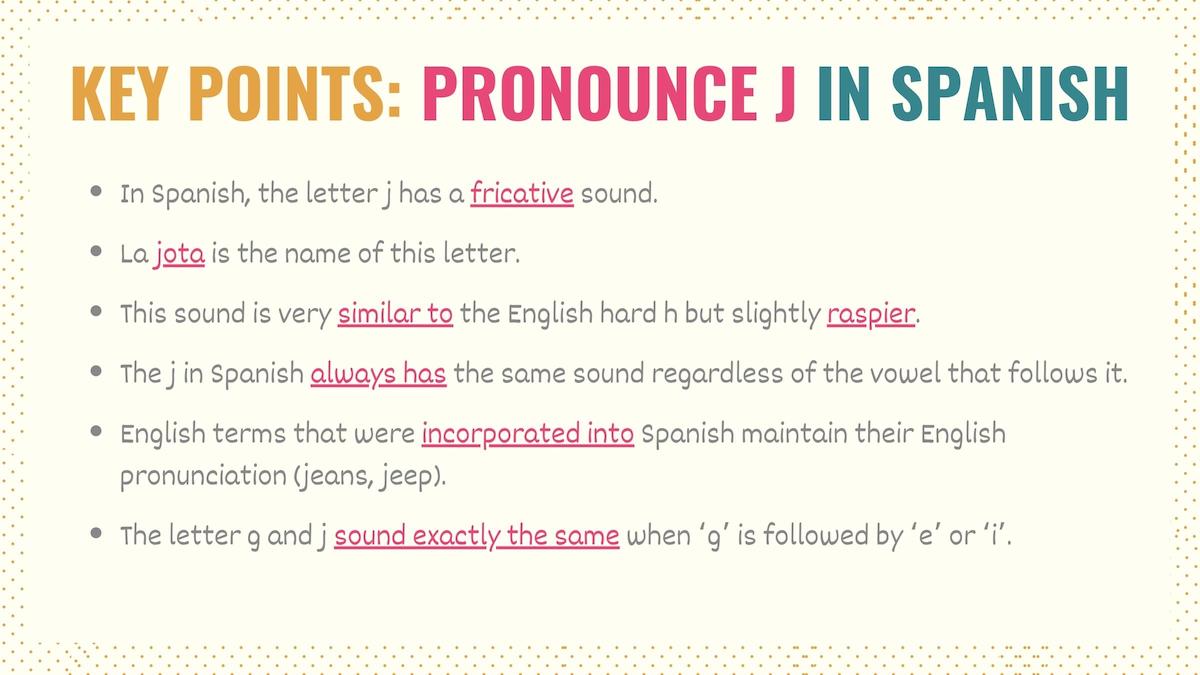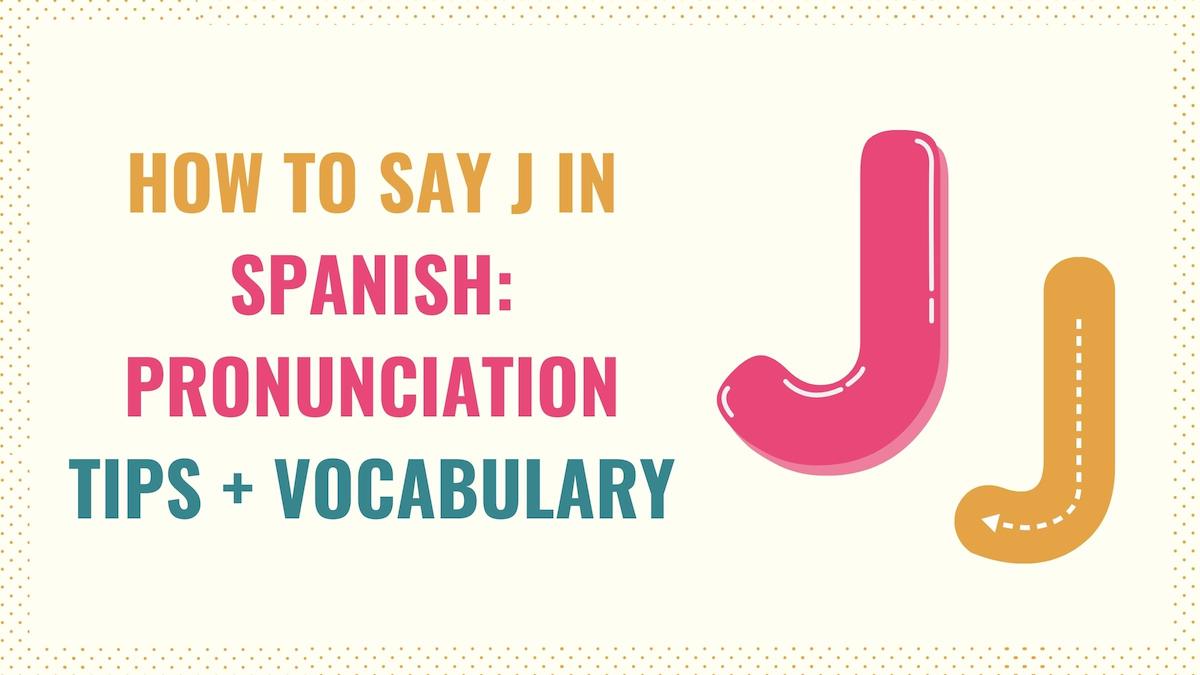The sound of the Spanish letter j can be challenging for many learners since its pronunciation differs from English. Since most beginners wonder how to say j in Spanish correctly, in this guide, you’ll learn how to pronounce this letter, and I’ll give you a list of common words with j to practice.
- How to Pronounce J in Spanish
- Difference Between G and J
- Common Spanish Words that Start with J
- Key Points
Make sure you play the recordings to check the correct pronunciation.
How to Say J in Spanish
To pronounce the letter j in Spanish, you must make a fricative sound at the back of your throat. Simply put, the j (la jota) is often pronounced with a soft gargling or raspy sound.
Check this recording with the pronunciation of the syllables ja, je, ji, jo, and ju.
The Spanish letter j is pronounced similarly to the English hard h. However, the letter j has a slightly raspier sound.
| Spanish word with j | Sounds similar to |
|---|---|
| Jabón (soap) | Hard |
| Jefe (boss) | Help |
| Jirafa (giraffe) | Heat |
| Mejor (better) | Hope |
| Jugar (play) | Hook |
Here is a simple tip to help you remember the sound connection.
Hahaha is how English speakers represent the sound of laughter, while in Spanish, we use jajaja to represent the same sound. Young Spanish speakers use hahaha and jajaja interchangeably when texting because they both represent the same sound.
The only situation where j is pronounced like the English j is with words borrowed from this language, such as jeans, jeep, and junior.
Take Note: If you compare the pronunciation of ‘j’ with other Spanish sounds, this word always sounds like ‘x’ or the hard ‘g’.

Difference Between G and J in Spanish
The letters j and g in Spanish share some similarities in their pronunciation. The letter j sounds similar to the English hard h all the time, whereas the g only sounds like this when followed by the vowels ‘e’ or ‘i’.
Check these examples:
- Genio vs Jefe
- Gimnasio vs Jitomate
- Gema vs Abeja
However, in Spanish, the letter ‘g’ has a different sound (soft) when followed by the vowels ‘a’, ‘o’, and ‘u’, in which case it no longer sounds like a ‘j’. Click here to learn more about how to pronounce ‘g’ in Spanish.
Words that Start with J in Spanish
Now that you know how to say j in Spanish, here is a list of common words you can use to practice. The first set of vocabulary are words that start with j in Spanish, and the second are terms that contain this letter.
Common words that start with j
- Jabón: Soap
- Jalar: To pull
- Jamón: Ham
- Jefe: Boss
- Jeringa: Syringe
- Jirafa: Giraffe
- Jitomate: Tomato
- Joya: Jewel
- Juego: Game
- Junio: June
- Junto: Next
- Jueves: Thursday
- Jugar: To play
- Jurar: To swear
Common terms that contain j
- Abajo: Below
- Abeja: Bee
- Bajar: To go down
- Cajero: ATM
- Cobija: Blanket
- Dibujar: To draw
- Enojar: To get upset
- Hijo: Son
- Hoja: Leaf / Sheet
- Mejor: Better
- Mujer: Woman
- Pájaro: Bird
- Reloj: Watch / Clock
- Rojo: Red
Key Points
The letter j is one of the Spanish letters many beginners struggle to pronounce. But, since you’ll find it in different words and verbs, you need to know how to say j in Spanish. Here are some important points to remember:
- In Spanish, the letter j has a fricative sound.
- La jota is the name of this letter.
- This sound is very similar to the English hard h but slightly raspier.
- The j in Spanish always has the same sound regardless of the vowel that follows it.
- English terms that were incorporated into Spanish maintain their English pronunciation (jeans, jeep).
- The letter g and j sound exactly the same when ‘g’ is followed by ‘e’ or ‘i’.
Download the J in Spanish Pronunciation PDF
If you liked this guide, feel free to download the PDF for this guide where you can review the key points and highlights on how to pronounce j in Spanish. It also includes a link back to this guide so you can listen to the audio recordings.



